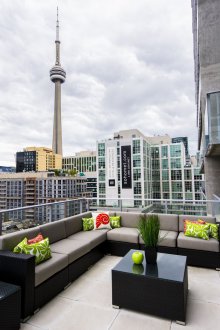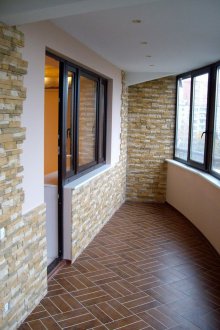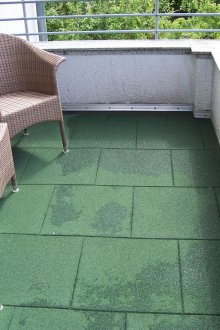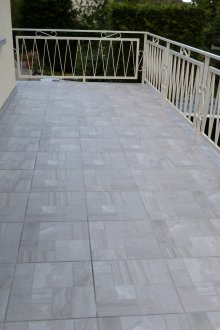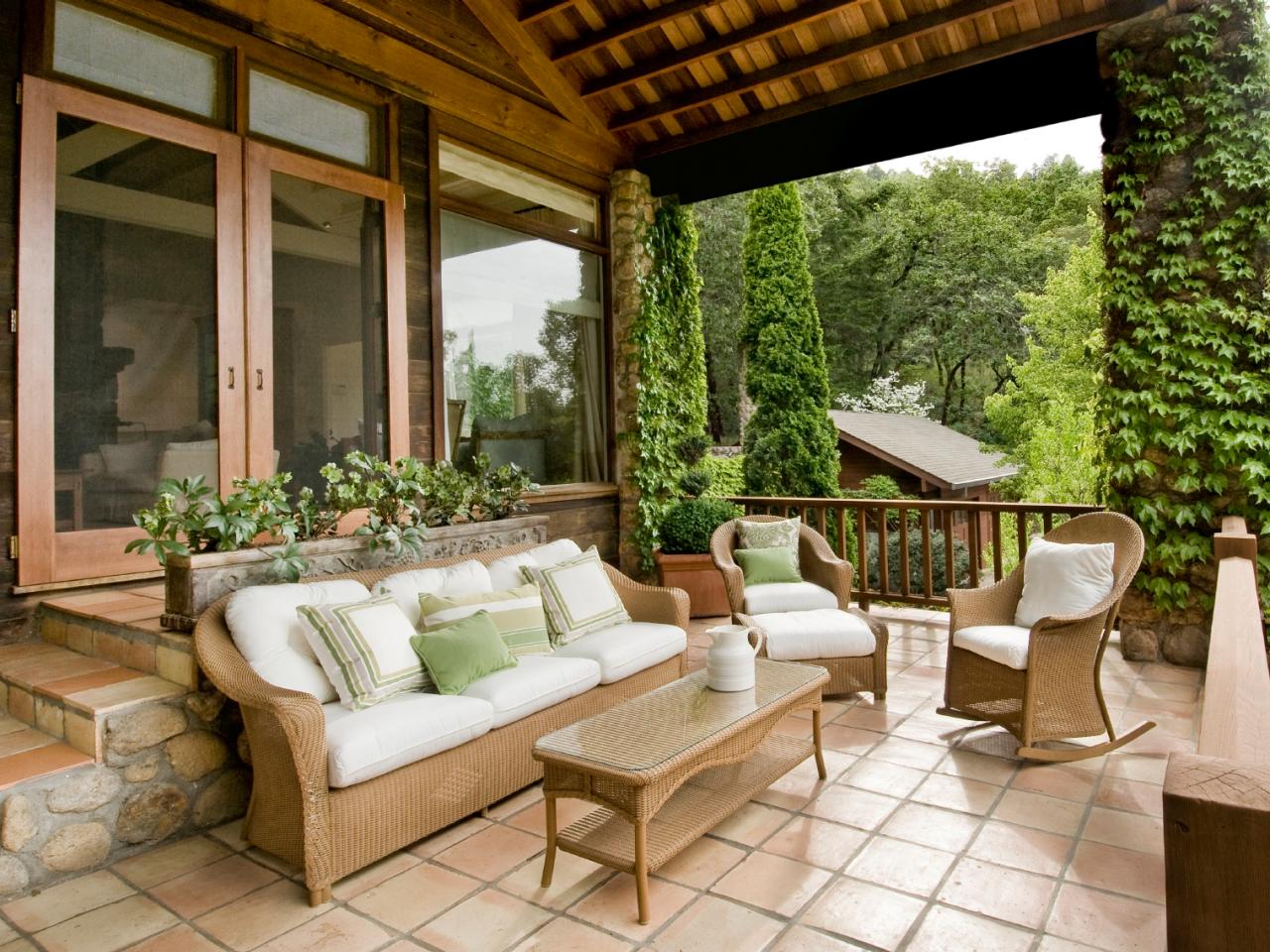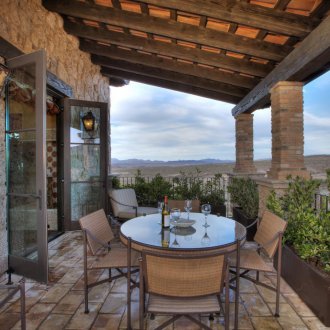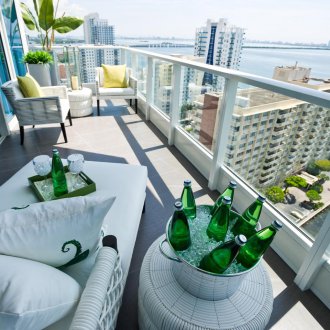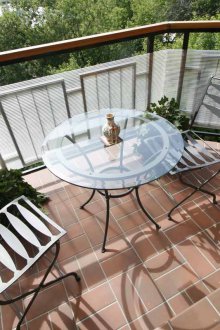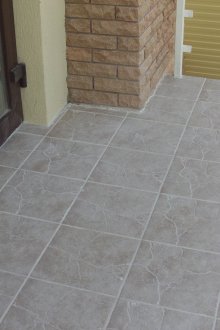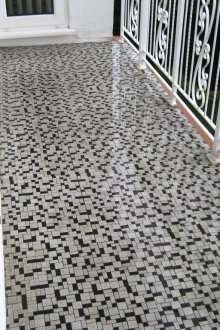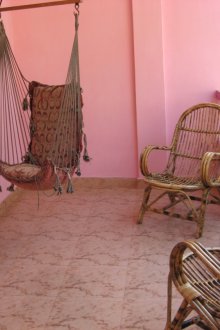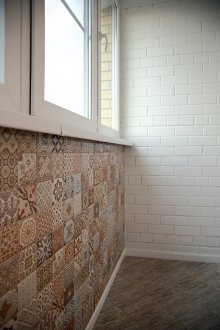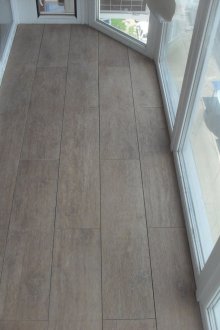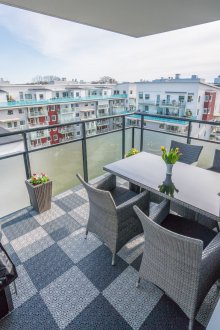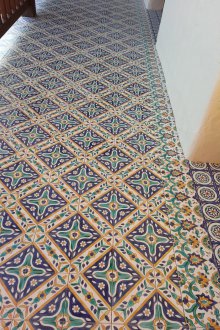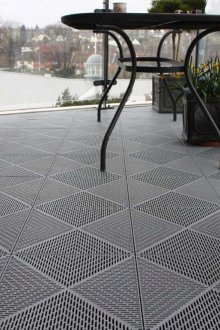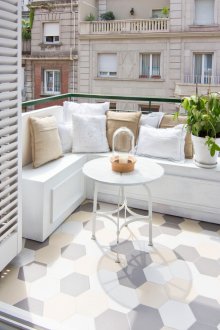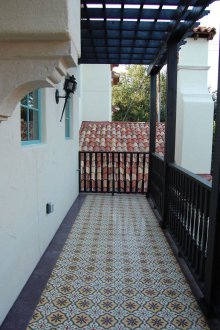Tiles on the balcony: the main differences and advantages (21 photos)
Content
Finishing on the balcony with your own hands rarely does without the use of tiles. This material is characterized by frost resistance and moisture resistance, which makes it as practical as possible. Not only floor tiles for the balcony are used, but also wall tiles and even mosaics. For the decoration of the loggias, ceiling tiles or gypsum tiles are used, all this makes the balcony design spectacular, not inferior in decorative characteristics to other rooms of the house or apartment.
The main advantages of tiles
The interior decoration of the balcony should take into account operating conditions: if we are talking about an open design, then all the finishing materials must be frost-resistant. Gypsum is used only on closed balconies, as it is adversely affected by high humidity. That is why most often for all surfaces ceramic tile is used on the balcony, which has the following advantages:
- high frost resistance;
- high strength;
- low water absorption;
- wide range of;
- simplicity of laying;
- durability.
Ceramic tiles on the balcony is a great opportunity to make quality repairs for many years. Using this material on the floor of the balcony and on the walls can reduce maintenance costs and greatly simplify cleaning.
What tiles are used on the balcony floor?
Ceramics has been used as floor material for many centuries. Today, the floor on the balcony under the tiles can be laid out of tiles, clinker, porcelain. These materials can also be laid on an electric heated floor. What to choose, because each tile has its own advantages? Traditionally, the balcony is tiled with ordinary tiles. This material attracts with affordable price, variety of collections and practicality.
If increased demands are made to the interior of the balcony, it is recommended to pay attention to such finishing material as porcelain stoneware. Among its features - the presence of collections that perfectly imitate expensive varieties of natural stone, rare leather, precious woods. The material has frost resistance and minimal water absorption.
Clinker tiles will give a unique charm to the balcony, the collections of which in the Mediterranean style will create a cozy atmosphere. Among the advantages of this material are high strength, resistance to aggressive chemicals, mineral oils. If you plan to use the balcony as a home workshop, then this will be the right choice.
Facing the walls of the balcony with tiles
Facing a balcony with ceramic tiles is a practical solution. It can be used on an open balcony on the front, side surfaces and on the parapet. The tile on a balcony solves several problems at once:
- there is no need to mount guides for other finishing materials - this saves space;
- simplified maintenance of surfaces on which dust constantly sits;
- the interval between possible repairs increases;
- any home craftsman can decorate the balcony with tiles;
- wall tiles are available in a wide variety of options;
- faced walls look elegant and graceful.
How to choose a tile for wall decoration and balcony parapet? It is desirable that it was necessarily frost-resistant tile. Brick tile is very popular. It can be either tiles or clinker tiles; porcelain manufacturers also have corresponding collections. A classic of the genre for decorating a balcony is mosaic tiles.
What tiles do apartment owners choose? Most often, they prefer to lay out walls from the remains of the material used to decorate the bathroom or kitchen. However, increasingly, laying tiles on the balcony is becoming part of a serious design project. This part of the house is a continuation of the living room or bedroom, respectively, the interior should be in a similar style. If laying tiles on the floor is practical, then wall cladding is aesthetic. You can pick up inexpensive tile collections for brick, and if you have the financial capabilities it is better to lay the walls with clinker tiles.
A serious problem is the choice of material for facing the inside of the parapet. If it is created from a metal profile and trimmed with slate or corrugated board from the outside, then it should be insulated. Thermal insulation should be 10-15 cm thick, it steals space and it is worth using drywall to hide the insulation.
Tile is perfectly laid on the gypsum board using the appropriate adhesive composition.
Ceiling tile on the balcony
The decoration of the ceiling depends on whether or not a glazed balcony. If plastic windows are installed, then you can use PVC tiles. This material has an affordable cost, minimum weight, and modern tile adhesives greatly simplify installation. If the balcony is open and accessible to wind or rain, it is better to limit yourself to painting the ceiling with facade paint. An alternative is a plastic panel laid on rails made of timber or galvanized iron.
Tile Laying Technology
There is no difficulty in how to lay the tiles on the balcony. In the presence of a rigid, solid base - reinforced concrete slab. It must be cleaned of debris, dust and tiles can be laid. Laying tiles on the balcony is no more difficult than in any of the rooms of the house. The only thing is that you need to choose the conditions under which this process will be comfortable. Is it necessary to insulate the balcony floor under the tile, if full glazing is planned? Yes, it is necessary to do this, otherwise the floor will become a source of cold, especially if the neighbors from the lower floor do not plan to glaze their balcony. To do this, before laying the tiles, they put thermal insulation - it can be extruded polystyrene foam or basalt fiber boards designed for floor insulation. An expanded clay-concrete screed can serve as an alternative, but it has a more substantial weight, which is not always welcomed by builders.
How to put tiles on the floor, if you plan to equip warm floors? The technology is similar to that used in living rooms. When carrying out work, do not forget that the floor on the balcony in any case should be below the threshold. In the opposite case, drafts will become a problem at home.
An alternative to ceramics on the floor is a rubber tile for a balcony, which has an affordable price and is practical. It will make the floor no less practical and durable, but it will be inferior to tiles and porcelain tiles in aesthetic qualities. On the walls, an alternative to tiles is plastic paneling or lining, but these materials are less durable and will require periodic repair. In order to save on the floor of the balcony, you can use the halves of the tiles left over from the decoration of the bathroom or kitchen. You can even use the battle of tiles, which in skillful hands will create an original surface with aesthetic qualities.
Tile on the balcony is the optimal finishing material, it is only necessary to make the right choice in favor of tiles, porcelain stoneware or clinker. It depends on the functionality of the balcony, the design tasks assigned to it and the budget allocated for the acquisition of finishing materials.
